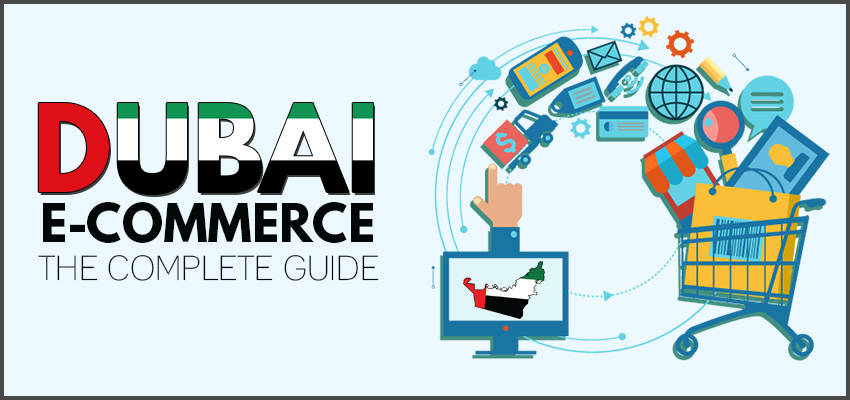Although developing an e-commerce app is a thrilling endeavor, it is imperative to comprehend the entire scope of budgets, necessary features, and development dates in order to assure success. You will be guided through each of these components by this in-depth guide, which will assist you in making wise selections for your e-commerce app journey.
Introduction
Developing a unique e-commerce application is a wise strategic choice for companies seeking to expand, given that mobile commerce remains the dominant force in the worldwide marketplace. But a lot of entrepreneurs struggle to figure out how much it will cost, what features are essential, and how long it would take to build your own ecommerce app and launch it successfully. We will dissect these crucial elements in this article and provide advice on how to successfully oversee each stage.
Part 1: Budgeting for Your Ecommerce App
Initial Considerations
Before getting too technical, it’s crucial to realize that the cost of developing an e-commerce app is dependent on a number of factors, such as the complexity of the app, the platforms it may be used on (iOS, Android, or both), the caliber of the design, and the location of the development team.
Major Elements Affecting the Price of App Development:
- App Type: Are you creating a straightforward e-commerce application with normal functions, or do you need more sophisticated features like search driven by AI or augmented reality (AR)?
- Platform: The cost of developing for iOS, Android, or both will vary. Although they can be less expensive, cross-platform development tools like React Native or Flutter may restrict native capabilities.
- Design Complexity: Compared to using templates, a custom design with a well-polished user interface will cost more.
- Backend Infrastructure: There are expenses related to hosting, databases, and cloud services that are used for transaction processing, data storage, and user management.
- Third-Party Integrations: Additional costs will come from shipping companies, CRM programs, marketing automation, and payment gateways.
Estimating the Cost of Development
To give a ballpark range, here’s a breakdown of what you can expect to pay:
- Basic Ecommerce App: $10,000 – $50,000
- Mid-Range App with Custom Features: $50,000 – $100,000
- Advanced Ecommerce App with High-End Features: $100,000 – $300,000+
Keep in mind, these are rough estimates. Pricing can vary widely based on the location of the development team. Developers in North America typically charge between $100 – $250 per hour, while teams in Eastern Europe or Asia may charge $30 – $100 per hour.
Ongoing Costs
Beyond development, you must also budget for ongoing operational costs:
- Hosting and Server Maintenance: Depending on user traffic, this can range from $500 to $10,000+ annually.
- App Store Fees: Google Play charges a one-time $25 registration fee, while Apple requires a $99 annual fee for access to the App Store.
- Marketing: Effective marketing (SEO, ads, influencer campaigns) may require an additional $5,000 to $50,000+ per year depending on scale.
Cost-Saving Tips
- Start with an MVP (Minimum Viable Product): Focus on core features first and launch an MVP to validate your concept before investing in a fully-featured app.
- Use App Builders: If your budget is tight, ecommerce app builders like Shopify, BigCommerce, or WooCommerce provide affordable options to build functional ecommerce apps without high development costs.
Part 2: Essential Features of an Ecommerce App
Core Features for Every Ecommerce App
Whatever your business, a strong foundation is essential for any e-commerce application. The following characteristics are essential for a mobile commerce platform to be successful:
- User Profiles & Registration: User convenience is ensured via a smooth sign-up procedure that offers options for social media, email, and single sign-on (SSO). Permit users to access order history and preserve preferences by allowing them to create profiles.
- Product Catalog & Search: Users can locate products more quickly with the use of an advanced search and filtering feature in a well-organized product catalog. Add functions such as product categories, keyword search, and price, color, size, and filtering.
- Shopping Cart & Checkout: Customers gather the things they want to buy in the shopping basket. It is essential to have a simple, fast checkout experience with few stages, payment alternatives, and address storage for further purchases.
- Multiple Payment Methods: Allow for the use of several payment gateways, such as PayPal, Apple Pay, Google Pay, credit cards, and local payment options like UPI or Alipay for international apps. Because security is so important, ensure PCI-DSS compliance.
- Push Notifications: Send consumers customized messages about specials, special deals, new products, and reminders about abandoned carts with push notifications. Push alerts are a great way to keep customers around.
- Ratings and Reviews: User-generated reviews and ratings provide products legitimacy and trust, which has a big impact on people’s decisions to buy. Include a user-friendly review system in your application.
- Order Tracking: For users to be satisfied, real-time order tracking is crucial. By integrating with shipping companies, the app lets users check delivery progress and anticipated arrival timings.
Advanced Features to Consider
If you’re aiming for a competitive edge, consider incorporating these advanced features:
- AI-Powered Personalization: By using user behavior analysis to generate tailored suggestions, artificial intelligence can raise the probability that a user will make a purchase. This is a common strategy used by sites like Amazon to increase sales.
- AR Integration: Customers can see products (such as apparel or furnishings) in real-world environments by using augmented reality. With AR, companies like Sephora and IKEA have found success by providing consumers with immersive experiences.
- Voice Search: Using spoken commands, customers may find products with voice search, which is powered by AI. This can accommodate users who want hands-free interactions while streamlining navigation.
- Loyalty Programs: You can promote recurring purchases by integrating loyalty programs into your app. Reward consumers that use your app often with points, discounts, or special deals.
- Social Commerce Integration: Integrate social commerce by enabling users to post wishlists or products on social media, which will enhance the social aspect of buying. Thanks in large part to sites like Pinterest and Instagram Shopping, social commerce has expanded rapidly.
User Experience (UX) Considerations
Your e-commerce app’s success is greatly influenced by its user experience (UX). Prioritize mobile-friendly design, quick load speeds, and easy navigation. Feedback loops and user testing are essential to guarantee a flawless experience.
Part 3: Timeframes for Development
How Long Does it Take to Build an Ecommerce App?
The development timeframe for an ecommerce app depends on the complexity of the app, features required, and the development team’s experience. Here’s a rough estimate based on complexity:
- Simple App: 3-6 months
- Mid-Level App: 6-9 months
- Advanced App: 9-12+ months
Planning and Research (1-2 Months): This stage entails determining the objectives, target market, rivals, and essential features of your app. Doing market research is essential to making sure the software you’re developing will satisfy customer needs. This is also the moment to select your development team and set your budget.
Design and Prototyping (2-4 Months): Wireframes and prototypes are created to show the app flow, with a focus on user interface (UI) and user experience (UX). Additionally, branding and graphic design components are integrated at this point.
Development (4–8 Months): During development, fundamental features like product catalogs, shopping carts, and payment systems are built, third-party services are integrated, and both the front-end and back-end code are written. While native apps must be developed separately for iOS and Android, cross-platform developers can use tools like React Native.
Testing (1-2 Months): To make sure your app functions as intended on all devices and in all user scenarios, thorough testing—including unit, UI/UX, and performance tests—is necessary. In an agile context, this phase might coincide with development.
Launch and Post-Launch (more than a month): The app should be launched once all tests are completed. When an app is released, it must be submitted to both the Apple App Store and Google Play, which might take several days to weeks, depending on when the reviews are completed. You’ll need to keep an eye on customer comments, address bugs, and release updates after the launch.
Accelerating the Development Timeline
If you have a short window of time and need to expedite the process, take into account the following:
- Agile Methodology: Using an agile methodology enables developers to produce updates in small increments and respond rapidly to changes.
- MVP Launch: You may get your software onto the market more quickly and make iterations based on customer input by releasing a minimum viable product first.
- Third-Party Tools: The time required for bespoke development can be decreased by utilizing already-built ecommerce systems or plugins for crucial features like payments or analytics.
Conclusion
The process of creating an e-commerce app is complex and involves careful consideration of features, development timelines, and budgets. Through meticulous planning, prioritizing essential features, and maintaining a realistic budget and schedule, you may position yourself for success in the fiercely competitive mobile commerce market.







